Contact Persons: M. Kostoglou [kostoglu@chem.auth.gr], T. Karapantsios [karapant@chem.auth.gr]
There are many open questions regarding the evolution of waves, especially for the case of turbulent films. To resolve the complexity in modeling wavy turbulent films more information need be derived from experimental data. On this account, a new way is proposed herein to analyze experimental film thickness traces, replacing the usual statistical analysis. Large waves are identified in experimental traces and their shape is described by approximation with a few parameters curve. The probability density functions of these parameters are identified and the whole procedure can be considered as a compression method of the information content of experimental data series. By comparing results at several downstream locations, information on the evolution of waves along the flow is derived. This information indicates a 3-D character of the flow, customary neglected in modeling efforts. In addition, the present results can be used for the numerical reconstruction of experimental film thickness traces as it follows. The direct simulation of the hydrodynamics of falling films is a computationally difficult task. Especially in the case of wavy turbulent films the required effort is beyond the current computational capabilities. An alternative approach is to reduce the complexity of the problem using experimental information. In this spirit the present work focuses on the reconstruction of film thickness traces employing the information acquired from experimental data. The reconstruction procedure for large waves is quite straightforward utilizing directly descriptive parameter distributions found from the analysis of experimental data. The rest of the film waves are reconstructed based on three criteria: their heights obey a “universal distribution”, their frequency is selected to match the experimental film thickness frequency and the overall film thickness time trace obeys a Weibull distribution. The final reconstruction algorithm is tested for wavy turbulent films over a broad range of Reynolds numbers with satisfactory results. Apart from efficient the code is robust and fast.

Figure 1: Physical meaning of parameters used to describe a large wave.
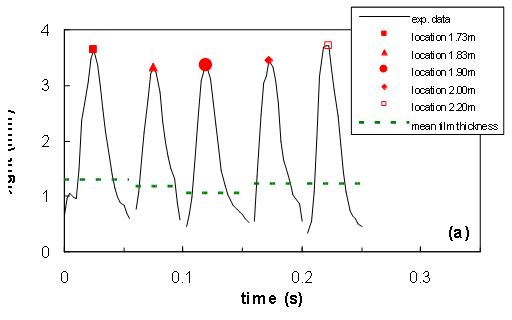 |
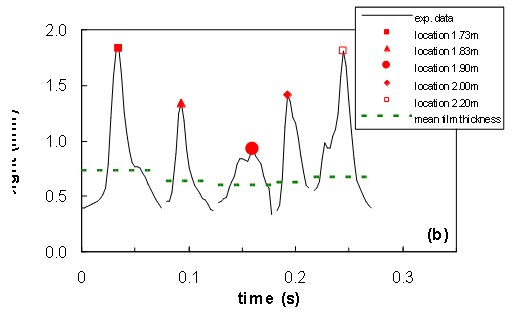 |
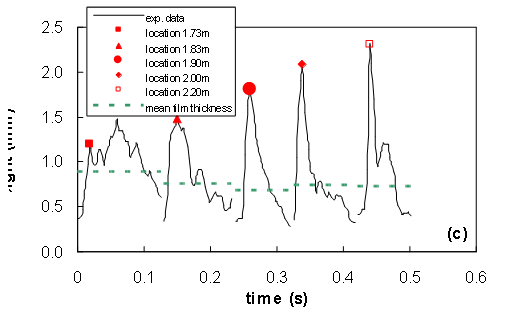 |
Figure 2: Downstream typical behaviors of large waves (a) a stable (slightly oscillating) wave (Re=7160) (b) a strongly oscillating wave (Re=2470) (c) wave birth (Re=3080)
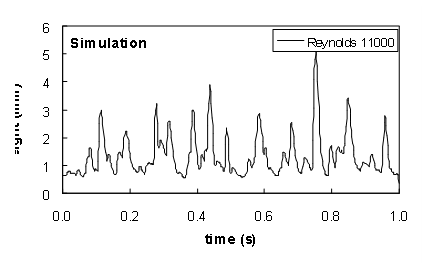 |
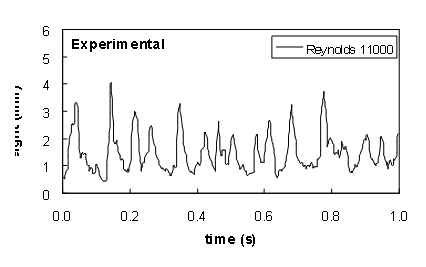 |
Figure 3: Comparison between experimental and reconstructed film thickness data for a Reynolds number in turbulent regime